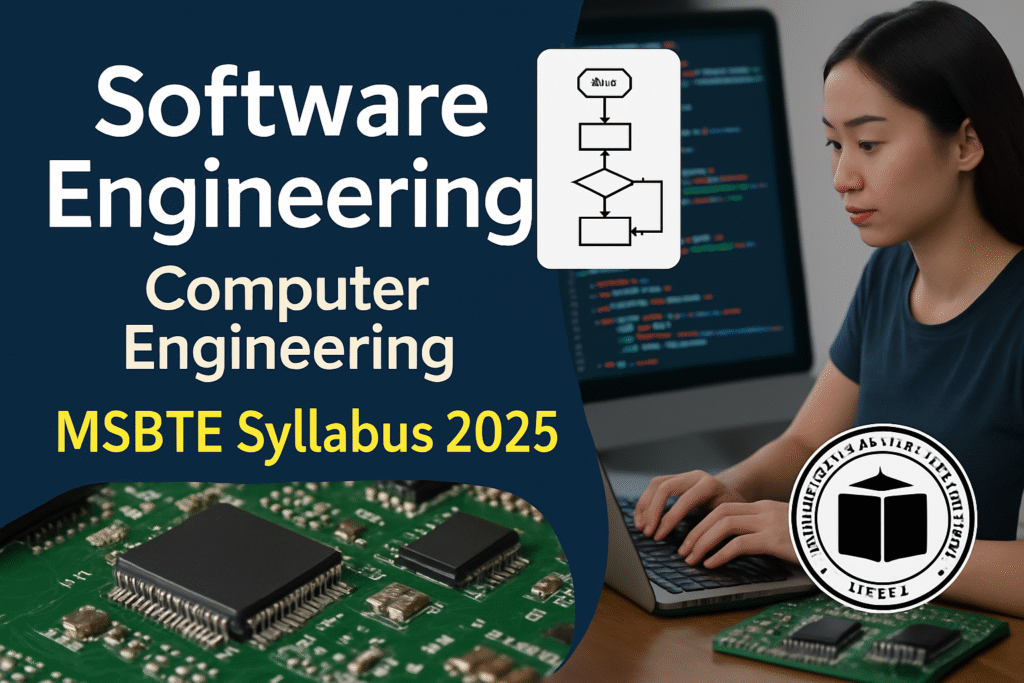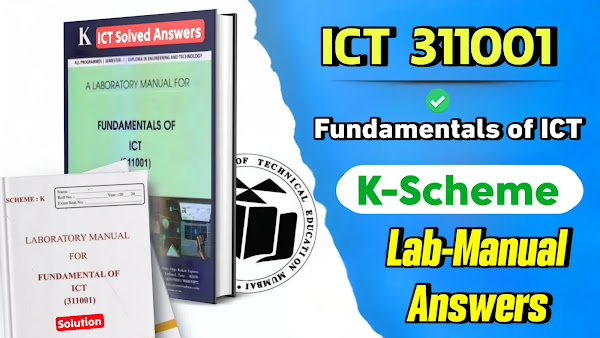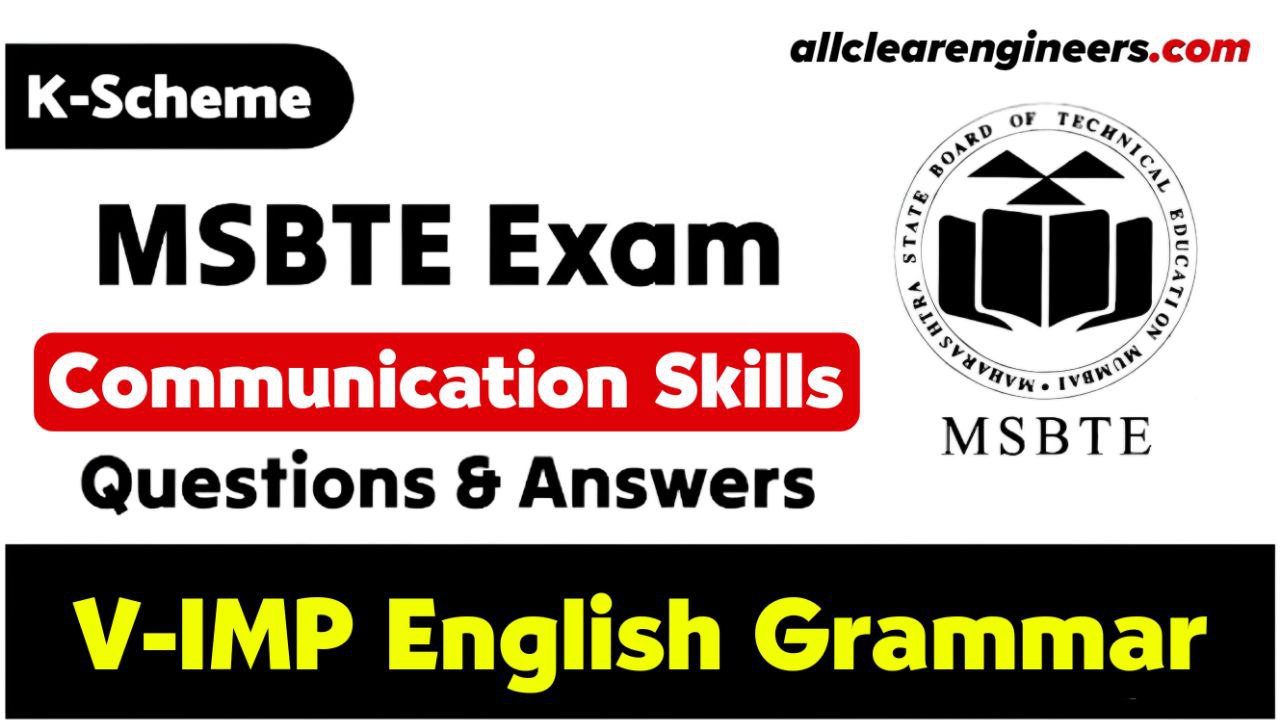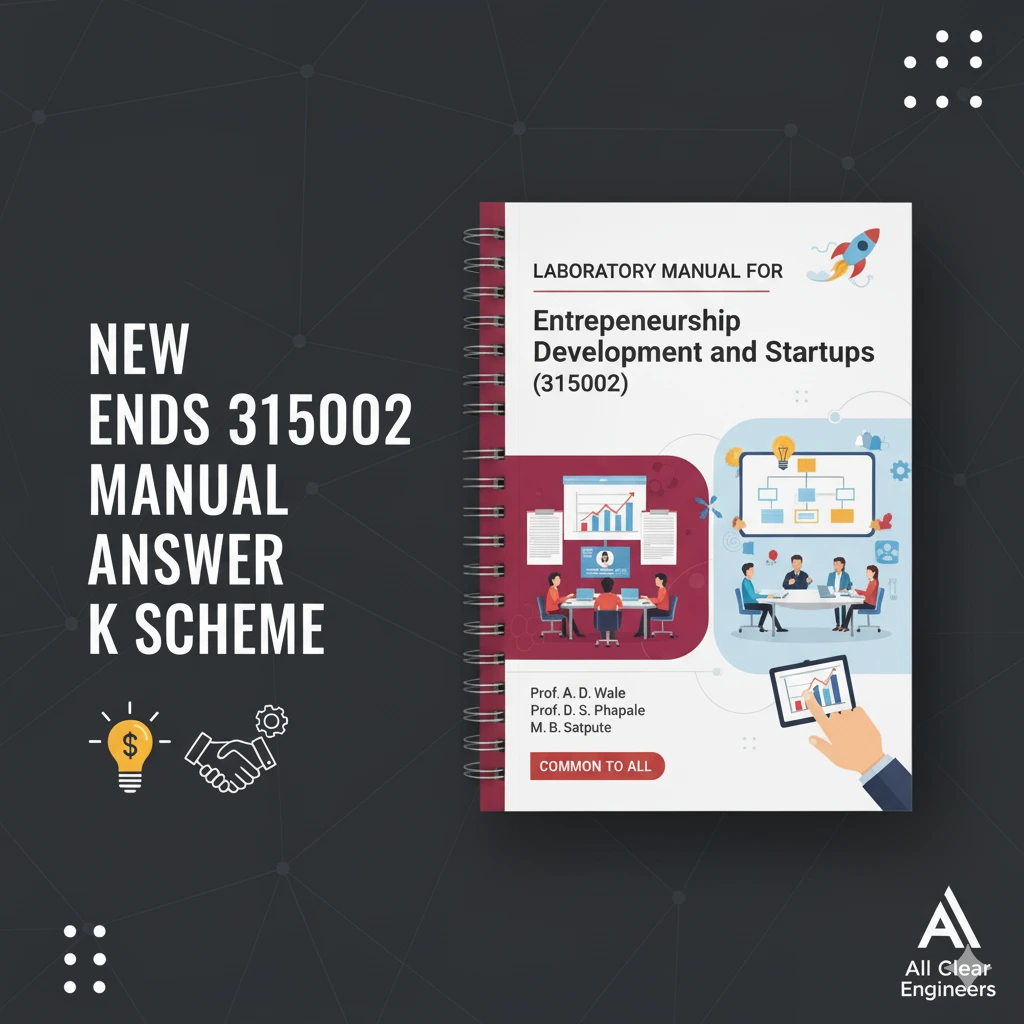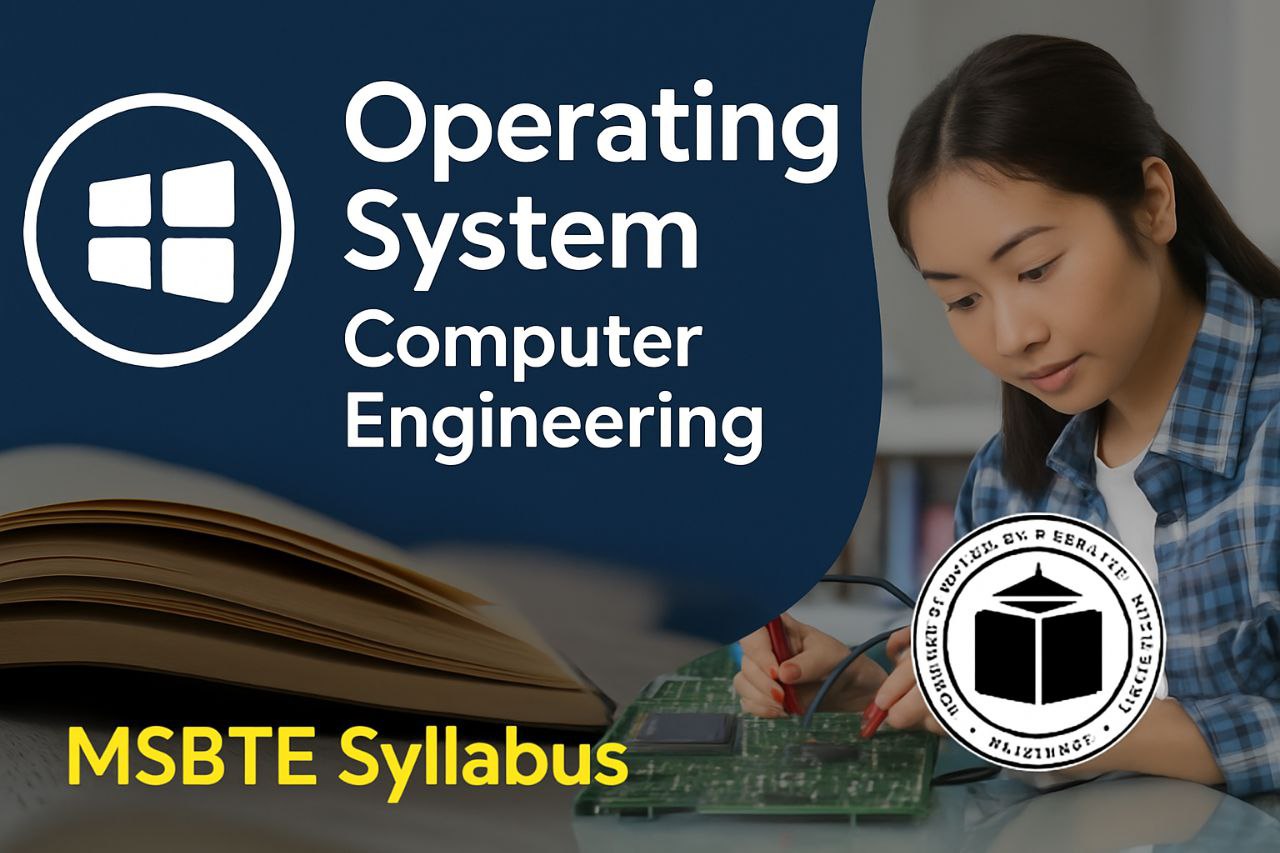Software Engineering Syllabus – MSBTE Diploma (Course Code: 315323)
Programme Code: CM/ CO/ CW/ HA/ IH/ SE
Semester: Fifth | Credits: 9 | Total Marks: 175
The Software Engineering syllabus (Course Code: 315323) under MSBTE K Scheme equips diploma students with skills to develop high-quality software. For example, students learn to apply disciplined approaches to design, develop, and test software, ensuring reliability and maintainability. Additionally, this course covers essential principles and tools for professional software development. Learn more at GeeksforGeeks.
I. Rationale
Software Engineering is the foundation for professional processes to be followed for designing, developing, testing and maintaining software involving principles, different techniques, and practices for software development. Therefore, this course enables students to develop requisite abilities to follow systemic and disciplined approach to software development that aims to create high quality, reliable and maintainable software.
II. Industry / Employer Expected Outcome
Apply software engineering principles to develop software product.
III. Course Outcomes for Software Engineering
Software Engineering prepares students to achieve specific outcomes. Consequently, the following course outcomes outline the skills students will demonstrate.
| Code | Learning Outcome |
|---|---|
| CO1 | Select suitable software development process model |
| CO2 | Prepare software requirement specification. |
| CO3 | Construct different Software design models |
| CO4 | Apply different planning and cost estimation techniques for a software product |
| CO5 | Apply project management techniques in software development. |
| CO6 | Use quality assurance principles in software development |
IV. Detailed Software Engineering Syllabus
Unit I: Software Development Process
Topics:
- Software characteristics, Types of software.
- The Process: Software Engineering: A Layered approach -Process, Methods and Tools
- Software development framework.
- Software Process Model: Waterfall Model
- Incremental Process Model: RAD Model
- Evolutionary Process Models: Prototyping model, Spiral model
- Agile Process Model: Extreme Programming, Adaptive Software Development (ASD), Scrum, Dynamic System Development Method (DSDM), CRYSTAL. Agile Unified Process (AUP)
Learning Outcomes:
- TLO 1.1 Select the attributes that match with standards for the given software application.
- TLO 1.2 Suggest the relevant software solution for the given problem.
- TLO 1.3 Select the relevant software process model for the given problem.
- TLO 1.4 Suggest the relevant activities in Agile Development Process.
Suggested Pedagogies: Presentations, Lecture Using Chalk-Board
Unit II: Software Requirement Engineering
Topics:
- Software Engineering core principles.
- Software Practices: Communication, Planning, Modelling, Construction, Software deployment (Statement and meaning of each principles for each practice).
- Requirement Engineering: Requirement Gathering and Analysis, Types: Functional, Product, organizational, External Requirements, Eliciting Requirements, Developing Use-cases, Building requirement models, Negotiation, Validation.
- Software Requirement Specification: Need, Format, and its Characteristics.
Learning Outcomes:
- TLO 2.1 Apply principles of software engineering for the given problem.
- TLO 2.2 Select the relevant requirement engineering steps for the given problem.
- TLO 2.3 Construct the Requirement Engineering model for the given problem.
- TLO 2.4 Prepare SRS for the given problem.
Suggested Pedagogies: Lecture Using Chalk-Board, Presentations, Case Study
Unit III: Software Modelling and Design
Topics:
- Translating Requirement model into design model: Data Modelling.
- Analysis Modelling: Elements of Analysis model.
- Design modelling: Fundamental Design Concepts (Abstraction, Information hiding, Structure, Modularity, Concurrency, Verification, Aesthetics).
- Design notations: Data Flow Diagram (DFD), Structured Flowcharts, Decision Tables.
- UML Modelling :Use-Case ,Class Diagrams, Sequence Diagrams.
- Testing – Meaning and purpose, testing methods – Black-box and White-box, Static and Dynamic testing, Level of testing, V-model.
Learning Outcomes:
- TLO 3.1 Identify the elements of analysis model for the given software requirements.
- TLO 3.2 Apply the specified design concepts for software requirements modeling.
- TLO 3.3 Construct software design using standard design notation.
- TLO 3.4 State the purpose of software testing.
- TLO 3.5 Draw Use-Case ,Class Diagrams, Sequence Diagrams for software project.
- TLO 3.6 Explain basic types of software testing.
Suggested Pedagogies: Lecture Using Chalk-Board, Presentations, Demonstration
Unit IV: Software Project Cost Estimation
Topics:
- The Management Spectrum – 4P’s.
- Metrics for Size Estimation: Line of Code (LoC), Function Points (FP).
- Project Cost Estimation Approaches: Overview of Heuristic, Analytical, and Empirical Estimation.
- COCOMO (Constructive Cost Model), COCOMO II.
- Risk Analysis and Management: Risk identification, Risk assessment, Risk management and monitoring, Risk Refinement and Mitigation, RMMM Plan.
Learning Outcomes:
- TLO 4.1 Explain the management spectrum for software project.
- TLO 4.2 Estimate size of software product.
- TLO 4.3 Estimate cost of software product using the empirical method.
- TLO 4.4 Compute size of the given software using COCOMO model.
- TLO 4.5 Apply RMMM strategy in Identified risks for any software development problem.
Suggested Pedagogies: Lecture Using Chalk-Board, Presentations, Case Study, Flipped Classroom
Unit V: Software Project Management
Topics:
- Project Scheduling: Basic principles, Work breakdown structure, Activity network
- Project Tracking: Timeline charts, Earned Value Analysis, Gantt Charts.
- Scheduling techniques: Critical Path Method(CPM), Program Evaluation Review Technique(PERT)
Learning Outcomes:
- TLO 5.1 Apply CPM/PERT scheduling technique for software project.
- TLO 5.2 Construct timeline chart/ Gantt chart to track progress of the given software project.
Suggested Pedagogies: Lecture Using Chalk-Board, Presentations, Demonstration
Unit VI: Software Quality Assurance
Topics:
- Software Quality Management vs. Software Quality Assurance.
- Phases of Software Quality Assurance: Planning, activities, audit, and review.
- Quality Evaluation standards: Six Sigma, CMMI: Levels, Process areas.
Learning Outcomes:
- TLO 6.1 Differentiate between Software Quality Management and Software Quality Assurance.
- TLO 6.2 Apply the phases of Software Quality Assurance in software development project
- TLO 6.3 Apply software quality evaluation standards.
Suggested Pedagogies: Lecture Using Chalk-Board, Presentations, Case Study
V. Teaching-Learning & Assessment Scheme
Understanding the structure of the Software Engineering course is crucial for effective learning. Consequently, the following scheme outlines the contact hours, credits, and assessment methods.
| Course Code | Course Title | Abbr | Course Category/s | Learning Scheme | Credits | Assessment Scheme | |||||||||||||
|---|---|---|---|---|---|---|---|---|---|---|---|---|---|---|---|---|---|---|---|
| Actual Contact Hrs./Week | SLH | NLH | Paper Duration | Theory | Based on LL & TL | Based on SL | Total Marks | ||||||||||||
| CL | TL | LL | Practical | FA-TH | SA-TH | Total | FA-PR | SA-PR | SLA | ||||||||||
| 315323 | SOFTWARE ENGINEERING | STE | DSC | 4 | – | 4 | 1 | 9 | 3 | 30 | 70 | 100 | 25 | 10 | 25 | 10 | 25 | 10 | 175 |
Total IKS Hrs for Sem. : 0 Hrs
Abbreviations: CL- ClassRoom Learning, TL- Tutorial Learning, LL- Laboratory Learning, SLH- Self Learning Hours, NLH- Notional Learning Hours, FA – Formative Assessment, SA – Summative assessment, IKS – Indian Knowledge System, SLA – Self Learning Assessment
Legends: @ Internal Assessment, # External Assessment, *# On Line Examination, @$ Internal Online Examination
Note:
- FA-TH represents average of two class tests of 30 marks each conducted during the semester.
- If candidate is not securing minimum passing marks in FA-PR of any course then the candidate shall be declared as “Detained” in that semester.
- If candidate is not securing minimum passing marks in SLA of any course then the candidate shall be declared as fail and will have to repeat and resubmit SLA work.
- Notional Learning hours for the semester are (CL+LL+TL+SL)hrs.* 10 Weeks
- 1 credit is equivalent to 30 Notional hrs.
- * Self learning hours shall not be reflected in the Time Table.
- * Self learning includes micro project / assignment / other activities.
VI. Laboratory Learning Outcomes and Practical Experiences
Practical exercises in Software Engineering reinforce theoretical concepts. For instance, students apply tools to create diagrams and test cases, enhancing their skills. Explore practical tools at Diagrams.net.

| Practical / Tutorial / Laboratory Learning Outcome (LLO) | Sr No | Laboratory Experiment / Practical Titles / Tutorial Titles | Number of hrs. | Relevant COs |
|---|---|---|---|---|
| LLO 1.1 Use software tool to Write problem statement and identify scope of the project | 1 | *Write problem statement to define the project title with bounded scope of the project. | 2 | CO1 |
| LLO 2.1 Use appropriate process model and activities related to project. | 2 | Select relevant process model to define activities and related tasks set | 2 | CO1 |
| LLO 3.1 Apply the principles of requirement engineering. | 3 | *Gather application specific requirements for assimilate into RE (Requirement’s engineering) model. | 2 | CO2 |
| LLO 4.1 Create SRS document for the project. | 4 | *Prepare broad SRS (software requirement software) for the project. | 2 | CO2 |
| LLO 5.1 Construct use case diagram for software models. | 5 | *Write use-cases and draw use-case diagram. | 2 | CO3 |
| LLO 6.1 Design activity diagram for the project. | 6 | Draw the activity diagram to represent flow from one activity to another for software development. | 2 | CO3 |
| LLO 7.1 Draw data flow diagram for the project. LLO 7.2 Create Decision tables and E-R diagram. | 7 | *Create DFDs (data flow diagram), Decision tables and E-R (entity-relationship) diagram. | 2 | CO3 |
| LLO 8.1 Represent software project by class diagrams. | 8 | Draw class diagram and Sequence diagram, State Transition Diagram. | 2 | CO3 |
| LLO 9.1 Prepare decision table for the project | 9 | * Create decision table for a project. | 2 | CO3 |
| LLO 10.1 Design test cases by referring SRS document. | 10 | *Write test cases to validate requirements from SRS document. | 2 | CO3 |
| LLO 11.1 Write test cases for Blackbox testing. | 11 | Prepare test cases for Black Box Testing. | 2 | CO3 |
| LLO 12.1 Identify risk involved in the project LLO 12.2 Prepare RMMM Plan. | 12 | * Identify risks involved in the project and prepare RMMM (RMMM-Risk Management, Mitigation and Monitoring) plan. | 2 | CO4 |
| LLO 13.1 Estimate size of project using function point matrix | 13 | * Calculate size of the project using Function point metric. | 2 | CO4 |
| LLO 14.1 Estimate size of project using COCOMO approach. | 14 | *Calculate cost of the project using COCOMO (Constructive Cost Model) / COCOMO II approach. | 2 | CO4 |
| LLO 15.1 Prepare project schedule using CPM/PERT technique. | 15 | *Create software project scheduling charts using CPM (Critical Path Method) / PERT (Project Evaluation and Review Technique) | 2 | CO5 |
| LLO 16.1 Monitor the progress of project using timeline/Gantt chart | 16 | Track progress of the project using Timeline charts/ Gantt charts. | 2 | CO5 |
| LLO 17.1 Prepare SQA plan to ensure various quality processes. | 17 | Prepare SQA plan that facilitates various attributes of quality of process. | 2 | CO6 |
| LLO 18.1 Prepare SQA plan to ensure quality product. | 18 | *Prepare SQA plan that facilitates various attributes of quality of product. | 2 | CO6 |
Note:
- Out of above suggestive LLOs –
- ‘*’ Marked Practicals (LLOs) Are mandatory.
- Minimum 80% of above list of lab experiment are to be performed.
- Judicial mix of LLOs are to be performed to achieve desired outcomes.
VII. Suggested Micro Project / Assignment / Activities for Specific Learning
Self-learning activities enhance Software Engineering skills. Moreover, students can work on projects or assignments to apply their knowledge practically.
Micro project
- Apply the principles of software engineering for Portfolio website for showcasing Skills and Work, Searchability and Online Presence, Demonstrating Growth and Progress, Career Advancement and Networking and Prepare complete technical document.
- Apply the principles of software engineering for Chatbot Application to create an intelligent chatbot to enhance customer support processes, providing efficient and personalized assistance and Develop technical document.
- Apply the principles of software engineering for Online Chat Application Project that enables users to exchange messages and communicate with each other in real-time. It allows individuals or groups to have conversations, share information, and collaborate instantly over the Internet. Online Chat Application is designed to provide a responsive and interactive experience, where messages are delivered and displayed immediately as they are sent and Prepare complete technical document.
Assignment
- Estimate Cost of software using any tool and risk involved in the library Management System
- Create DFDs, Activity Diagram, ER-Diagrams for Student Management System.
- Visit any medical shop and collect requirements from shop keeper and create SRS document
Other
- Complete the course basic of software engineering on Infosys Springboard or any MOOCs platforms.
Note:
- Above is just a suggestive list of microprojects and assignments; faculty must prepare their own bank of microprojects, assignments, and activities in a similar way.
- The faculty must allocate judicial mix of tasks, considering the weaknesses and / strengths of the student in acquiring the desired skills.
- If a microproject is assigned, it is expected to be completed as a group activity.
- SLA marks shall be awarded as per the continuous assessment record.
- For courses with no SLA component the list of suggestive microprojects / assignments/ activities are optional, faculty may encourage students to perform these tasks for enhanced learning experiences.
- If the course does not have associated SLA component, above suggestive listings is applicable to Tutorials and maybe considered for FA-PR evaluations.
VIII. Laboratory Equipment / Instruments / Tools / Software Required
Appropriate tools are essential for Software Engineering practicals. Thus, the following equipment and software are recommended. Check out tools at TutorialsPoint.
| Sr.No | Equipment Name with Broad Specifications | Relevant LLO Number |
|---|---|---|
| 1 | Software Project Management Tools: Open source Software such as Jira. | 1,2,3,4,10,11,17,18 |
| 2 | Software Design tools : Projectriskmanager | 12 |
| 3 | Software Design tools :Open Project, Ganttproject 3.3 | 15,16 |
| 4 | Software Design tools: Free Use Case Diagram Creator | 5 |
| 5 | Software Design tools: Draw.io, Decision Table Maker, Tiny tools | 6,7,8,9,13,14 |
| 6 | Hardware: Personal computer, processor i3 and above, RAM minimum 4 GB | All |
| 7 | Operating system: Windows 10 and above | All |
IX. Suggested Weightage to Learning Efforts & Assessment Purpose
The assessment structure ensures balanced evaluation. Hence, the specification table details the weightage for each unit.
| Sr.No | Unit | Unit Title | Aligned COs | Learning Hours | R-Level | U-Level | A-Level | Total Marks |
|---|---|---|---|---|---|---|---|---|
| 1 | I | Software Development Process | CO1 | 7 | 2 | 6 | 4 | 12 |
| 2 | II | Software Requirement Engineering | CO2 | 9 | 4 | 6 | 4 | 14 |
| 3 | III | Software Modelling and Design | CO3 | 9 | 4 | 4 | 8 | 16 |
| 4 | IV | Software Project Cost Estimation | CO4 | 8 | 2 | 2 | 8 | 12 |
| 5 | V | Software Project Management | CO5 | 4 | 2 | 2 | 4 | 8 |
| 6 | VI | Software Quality Assurance | CO6 | 3 | 2 | 2 | 4 | 8 |
| Grand Total | 40 | 16 | 22 | 32 | 70 | |||
X. Assessment Methodologies/Tools
Assessments in Software Engineering are designed to evaluate both process and product. Accordingly, the following methodologies are used.
Formative assessment (Assessment for Learning)
- Each practical will be assessed considering 60% weightage to process, 40% weightage to product.
- Continuous assessment based on process and product related performance indicators.
- A Continuous assessment -based term work.
Summative Assessment (Assessment of Learning)
- End Semester Examination, Lab Performance, Viva voce
XI. Suggested COs – POs Matrix Form
The matrix aligns course outcomes with program outcomes. Thus, it ensures comprehensive skill development.
| Course Outcomes (COs) | Programme Outcomes (POs) | Programme Specific Outcomes* (PSOs) | ||||||||
|---|---|---|---|---|---|---|---|---|---|---|
| PO-1 Basic and Discipline Specific Knowledge | PO-2 Problem Analysis | PO-3 Design/ Development of Solutions | PO-4 Engineering Tools | PO-5 Engineering Practices for Society, Sustainability and Environment | PO-6 Project Management | PO-7 Life Long Learning | PSO-1 | PSO-2 | PSO-3 | |
| CO1 | 1 | 2 | 2 | 2 | 1 | – | 1 | |||
| CO2 | 2 | 3 | 3 | 2 | 1 | – | 1 | |||
| CO3 | 2 | 2 | 3 | 3 | – | – | 1 | |||
| CO4 | 2 | 2 | 2 | 3 | – | 2 | 2 | |||
| CO5 | 2 | 3 | 2 | 3 | – | 3 | 2 | |||
| CO6 | – | 2 | 2 | 3 | 1 | 2 | 2 | |||
Legends: – High:03, Medium:02, Low:01, No Mapping: –
*PSOs are to be formulated at institute level
XII. Suggested Learning Materials / Books
Recommended books provide in-depth knowledge. Hence, students should refer to these resources.
- Software Engineering: A practitioner’s approach by Roger S. Pressman & Bruce R. Maxim (McGraw Hill Higher Education, New Delhi, Ninth Edition, ISBN 93-5532-504-5)
- Software Engineering Concepts by Richard Fairly (McGraw Hill Education New Delhi -2001, ISBN-13: 9780074631218)
- Software Engineering: Principles and practices by Deepak Jain (Oxford University Press, New Delhi, ISBN 9780195694840)
- Software Testing: Principles and Practices by Srinivasan Desikan, Gopalaswamy Ramesh (PEARSON Publisher: Pearson India 2007, ISBN: 978-81-7758-121-8)
- Software Testing by Ron Patton (Sams Publishing; 2nd edition, 2005, ISBN: 0672327988)
XIII. Learning Websites & Portals
Online resources enhance learning. Therefore, students can access these portals for additional insights.
| Sr.No | Link / Portal | Description |
|---|---|---|
| 1 | https://www.geeksforgeeks.org/software-engineering-introduction-to-software-engineering/ | Software engineering tutorials from Geeksforgeeks |
| 2 | https://www.tutorialspoint.com/software_engineering/index.htm | Software Engineering Tutorials |
| 3 | https://www.sei.cmu.edu/ | Software Engineering Institute |
| 4 | https://www.youtube.com/watch?v=WjwEh15M5Rw | Agile Methodology |
| 5 | https://app.diagrams.net/ | Software Design -DFDs, Class Diagrams, Use Case Diagrams |
Note: Teachers are requested to check the creative common license status/financial implications of the suggested online educational resources before use by the students
